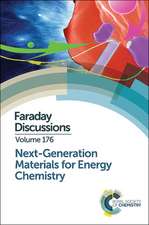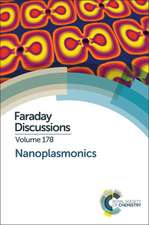Digitally Assisted Pipeline ADCs: Theory and Implementation
Autor Boris Murmann, Bernhard E. Boseren Limba Engleză Hardback – 30 apr 2004
Digitally Assisted Pipeline ADCs: Theory and Implementation describes in detail the implementation and measurement results of a 12-bit, 75-MSample/sec proof-of-concept prototype. The Experimental converter achieves power savings greater than 60% over conventional implementations.
Digitally Assisted Pipeline ADCs: Theory and Implementationwill be of interest to researchers and professionals interested in advances of state-of-the-art in A/D conversion techniques.
| Toate formatele și edițiile | Preț | Express |
|---|---|---|
| Paperback (1) | 634.32 lei 6-8 săpt. | |
| Springer Us – 3 dec 2010 | 634.32 lei 6-8 săpt. | |
| Hardback (1) | 642.03 lei 6-8 săpt. | |
| Springer Us – 30 apr 2004 | 642.03 lei 6-8 săpt. |
Preț: 642.03 lei
Preț vechi: 755.33 lei
-15% Nou
Puncte Express: 963
Preț estimativ în valută:
122.85€ • 128.53$ • 102.05£
122.85€ • 128.53$ • 102.05£
Carte tipărită la comandă
Livrare economică 03-17 aprilie
Preluare comenzi: 021 569.72.76
Specificații
ISBN-13: 9781402078392
ISBN-10: 1402078390
Pagini: 180
Ilustrații: XX, 155 p.
Dimensiuni: 155 x 235 x 15 mm
Greutate: 0.46 kg
Ediția:2004
Editura: Springer Us
Colecția Springer
Locul publicării:New York, NY, United States
ISBN-10: 1402078390
Pagini: 180
Ilustrații: XX, 155 p.
Dimensiuni: 155 x 235 x 15 mm
Greutate: 0.46 kg
Ediția:2004
Editura: Springer Us
Colecția Springer
Locul publicării:New York, NY, United States
Public țintă
ResearchCuprins
List of Figures.- List of Tables.- Acknowledgements.- Preface.- 1: Introduction.- 2: Performance Trends.- 3: Scaling Analysis.- 4: Improving Analog Circuit Efficiency.- 5: Open-Loop Pipelined ADCs.- 6: Digital Nonlinearity Correction.- 7: Statistics-Based Parameter Estimation.- 8: Prototype Implementation.- 9: Experimental Results.- 10: Conclusion.- Appendices. A: Open-Loop Charge Redistribution. B: Estimator Variance. C: LMS Loop Analysis. 1. Time Constant. 2. Output Variance. 3. Maximum Gain Parameters.- References.- Index.




















